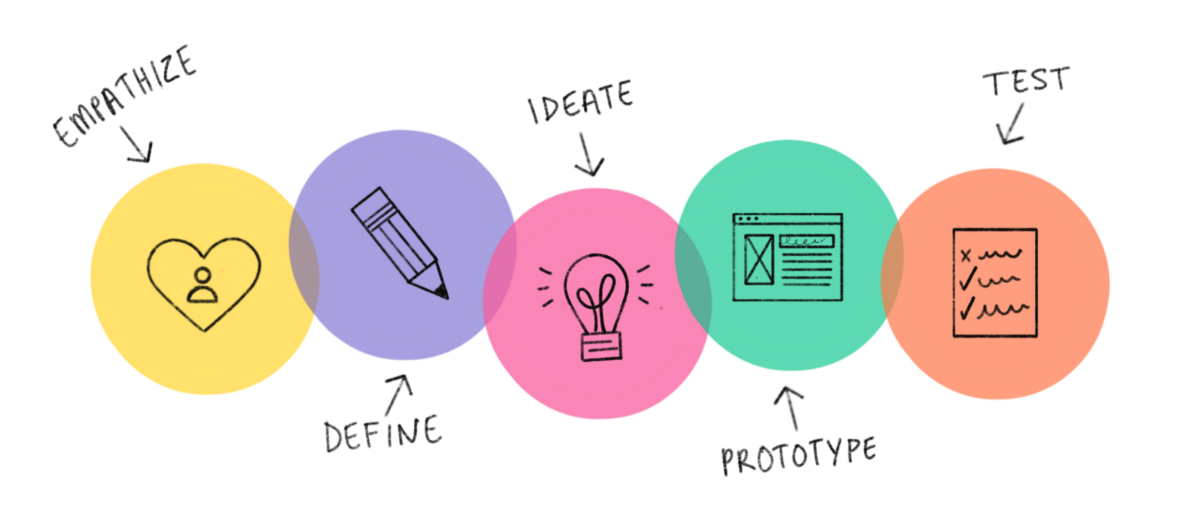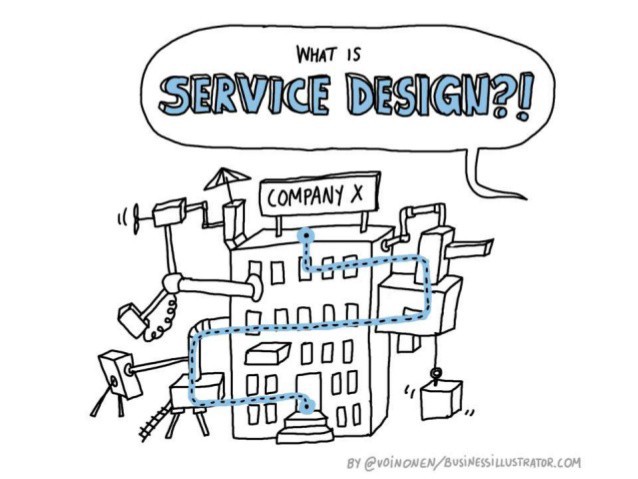
Design Thinking process: empathise, define, ideate, prototype, test
In my first story ‘User Experience is …’ I promised that …
"over the course of a few stories, I’ll try and cover a few of the sciences we draw upon in our art as a creative community to create engaging experiences."
This time out we’re looking at how Design Thinking plays its part in designing outcomes for complex challenges …

Design Thinking process: empathise, define, ideate, prototype, test
The Design Thinking framework was popularised by the Stanford Design School. Based on the Scientific Method, David Kelly, Co-founder of IDEO and founder of Stanford Design School, introduced empathy to the Scientific Method and Design Thinking was born! It was created as a way to make the creative process repeatable. And used as a system to approach difficult problems in order to create suitable outcomes.
Design thinking combines the problem solving routes of design with a hyper focus on users. Truly empathising with what else the user is doing, where they are using a product, what their motivations are and what they are trying to achieve by using a product.
Like the Scientific Method and agile, it’s more than a methodology or framework. It’s a way of thinking, of approaching in a certain way to solving complex challenges, guided by some principals.
The Scientific Method, Agile and Design Thinking could be considered more like mindsets. They’re all approaches that focus on action and human (or natural) centred experiences that guide the team to the correct outcome. They’re all non linear, and can’t be completed by one specific approach. But are iterative, regularly testing and learning are used to guide the team and the design of the outcome. So you could think of Design Thinking of being an extension of the Scientific Method.
In essence, the Design Thinking process is iterative, flexible and focused on collaboration between designers and users, with an emphasis on bringing ideas to life based on how real users think, feel and behave.

5 stages of Design Thinking process, Interaction Design Org
Design Thinking tackles complex problems by:
Empathising: Understanding the human needs involved. Defining: Re-framing and defining the problem in human-centric ways. Ideating: Creating many ideas in ideation sessions. Prototyping: Adopting a hands-on approach in prototyping. Testing: Developing a prototype/solution to the problem.5 Stages in the Design Thinking Process
Design Thinking is a design methodology that provides a solution-based approach to solving problems. It's extremely useful in tackling ...
www.interaction-design.org
Design Thinking looks at having a beginners mindset and approach to problems, so you can explore every possible avenue, having lots of possibilities and not being closed or judgemental of ideas. It’s about having not only empathy with our end users but also having a human centred approach to the way we design and work as a team, to uncover deep needs and unmet needs. Design Thinking allows the team to define a problem with a specific point of view and then be able to reframe a problem by using a different point of view. Ultimately allowing the team to ideate and generate innovative solutions by democratising design through testing hypothesis and prototypes.
A good point of view can align your team, provide a way to compare competing ideas and fuel brainstorms. The DSchool at Stanford came up with a great POV checklist:
‘Prototype like you’re right, test like you’re wrong’
Design Thinking can help to explore innovative solutions. Innovation can’t be a one-time affair; it needs to be part of the company’s approach and mindset. So Design Thinking was used to enable and embed this mindset into company’s ethos.
Innovation doesn’t always come that easily, even in small, agile companies. That’s where Design Thinking comes in.
And Design Thinking isn’t just to enable creativity and design solutions and products. It can also be used to design teams. IBM have used it to shape products and teams, leading to them to pivot how they have relationships with their partners and them becoming more solution providers and not just hardware producers from the 1980’s. These days IBM have teams that service industries with solutions.
A classic example of Design Thinking was the Apollo 13 Mission Control Team when they needed to work around the oxygen tank exploding. I’m sure everyone has seen the movie, but the team had to brainstorm a new flight plan with the top engineers and scientists.
What is design thinking, and how do we apply it? | Inside Design Blog
The famous inventor, engineer, businessman, and holder of no fewer than 186 patents Charles Kettering one said, "If you have always done it that way ...”
www.invisionapp.com
What Is Design Thinking? A Comprehensive Beginner's Guide
Design Thinking is both an ideology and a process, concerned with solving complex problems in a highly user-centric way. In this guide we'll give you a detailed definition of ...
careerfoundry.com

Is design thinking, just the modern version of the Scientific Method?
We hear a lot about Design Thinking and Service Design these days, but are these anything new or just a different way to express good creative problem solving, in a way that makes it easy to follow and repeatable for everyone?
The Scientific Method was created to formalise and baseline scientific experiments, so that they were robust and detailed enough to make the findings make sense.
Design Thinking was a build off the Scientific Method, which introduced empathy into this mix. So really is Design Thinking just a design process to help guide the creative problem solving process?
Well actually Design Thinking relies on a mindset and not just a process. In order to really engage with Design Thinking you need to:
If you think about it, anyone could follow the design process. In fact if 5 different groups followed it, no doubt they would come up with 5 different solutions.

Empathy for how users use their head and heart
If any of the above groups did follow the design process to come up with different solutions. If they didn’t use empathy then none of the solutions might have met what the key problem was, to provide the solution in such a way that it’s as supportive as it can be.
One of the keys to design thinking is being able to take a business lead problem and being able to reframe it into a colleague or customer concern. Which puts the user right in the middle of the problem, to understand how the problem affects them and how they do and would like to behave.
Lastly it’s important to approach research with the aim of proving you’re less wrong and not that you’re right. With that mindset you will look for all the holes and really pick a part the solution and not try and find information that proves you’re right.

What is Service Design, Business Illustrator
And actually the same could be said of Service Design. It’s not a new thing but just the full view of the design process that takes into consideration everything it takes in order to deliver the experience you’re designing, no matter if that is front stage or back stage, or a human or digital interaction.
So it’s really feels like these aren’t new things, under the hood they are just expressing the design process and how to solve problems well by considering all view points of a problem. At the end of the day they’re nothing to be scared of or intimidated by, they are just a different way to visualise how to solve problems creatively and effectively and make it repeatable.
So if you’re doing good design, returning positive KPIs and solving problems effectively, but you’re hearing a lot about design thinking or service design.
Don’t get intimidated by these new academic and elitist terms, just think of them as design acronyms that you need to understand and get used to. You probably don’t need to do anything new, or up skill, you might just need to reframe and have a slightly different mindset during the design process.
Reflecting on Design Thinking I can see that it’s the mindset more than the tools we use. So I’m going to reflect on the techniques, methodologies and principals in them to compare User Experience with Service Design.
Originally written as part of the ‘User Experience is …’ series for UX Collective.